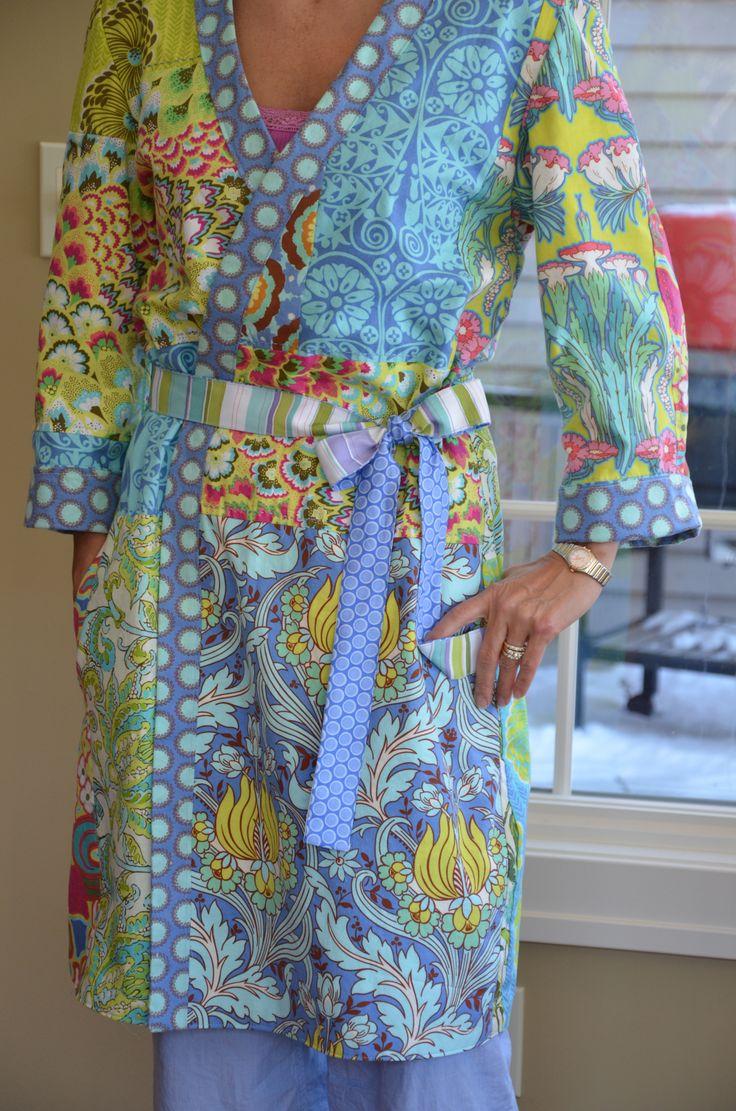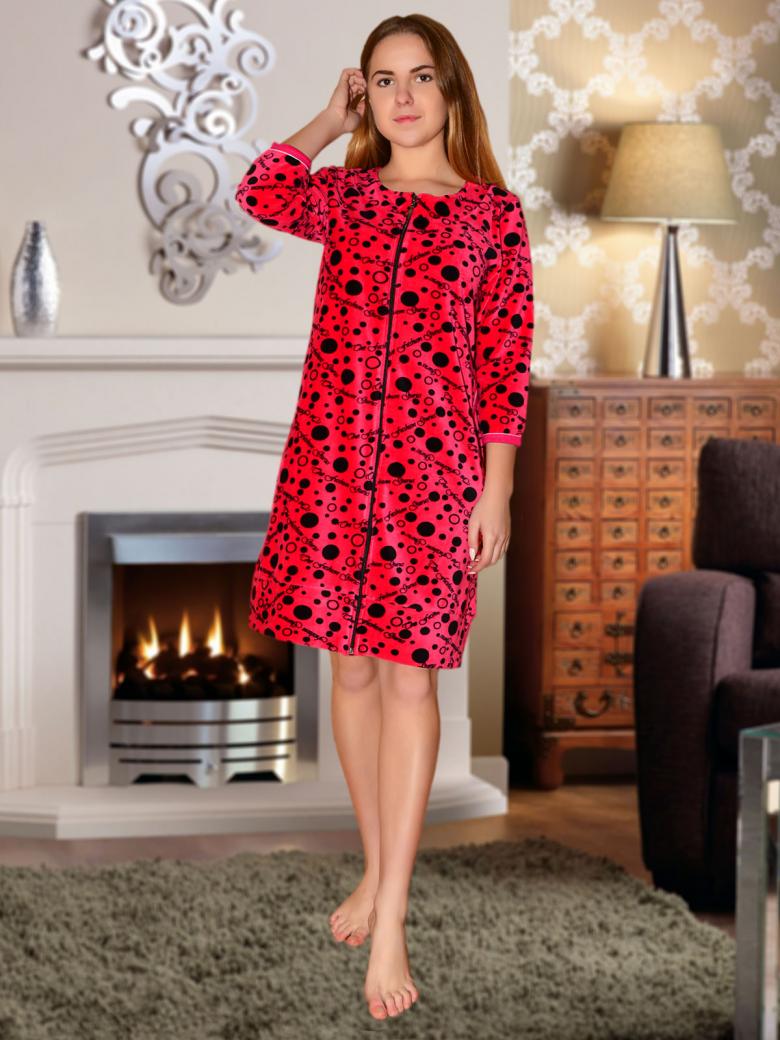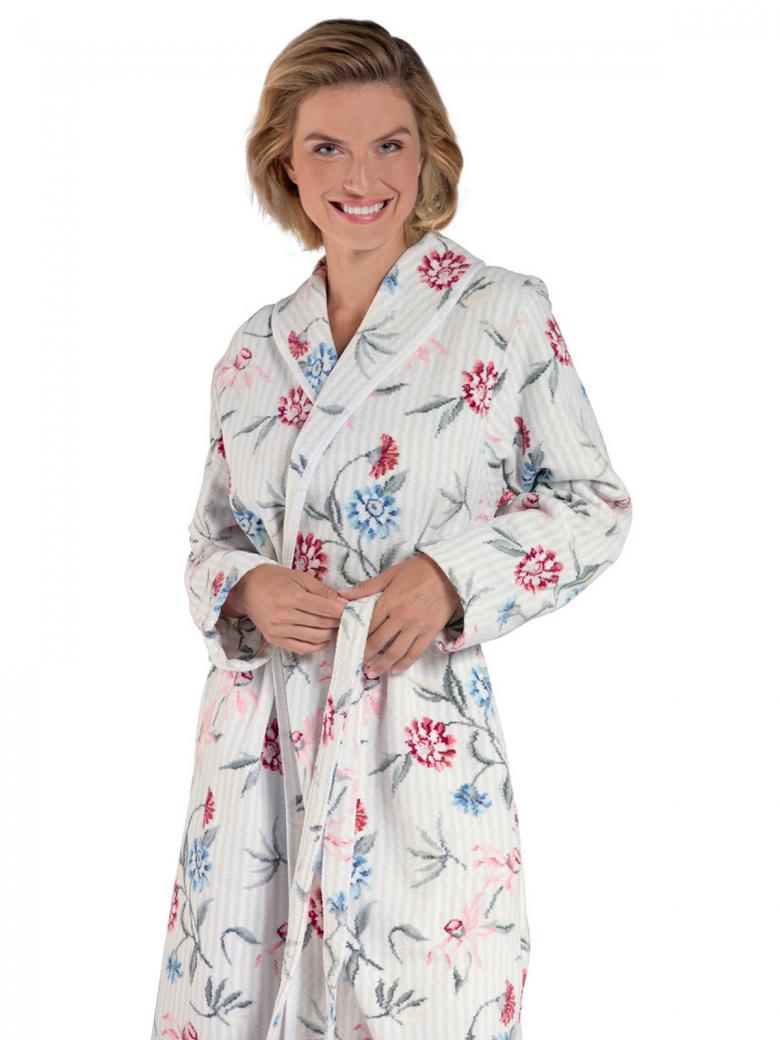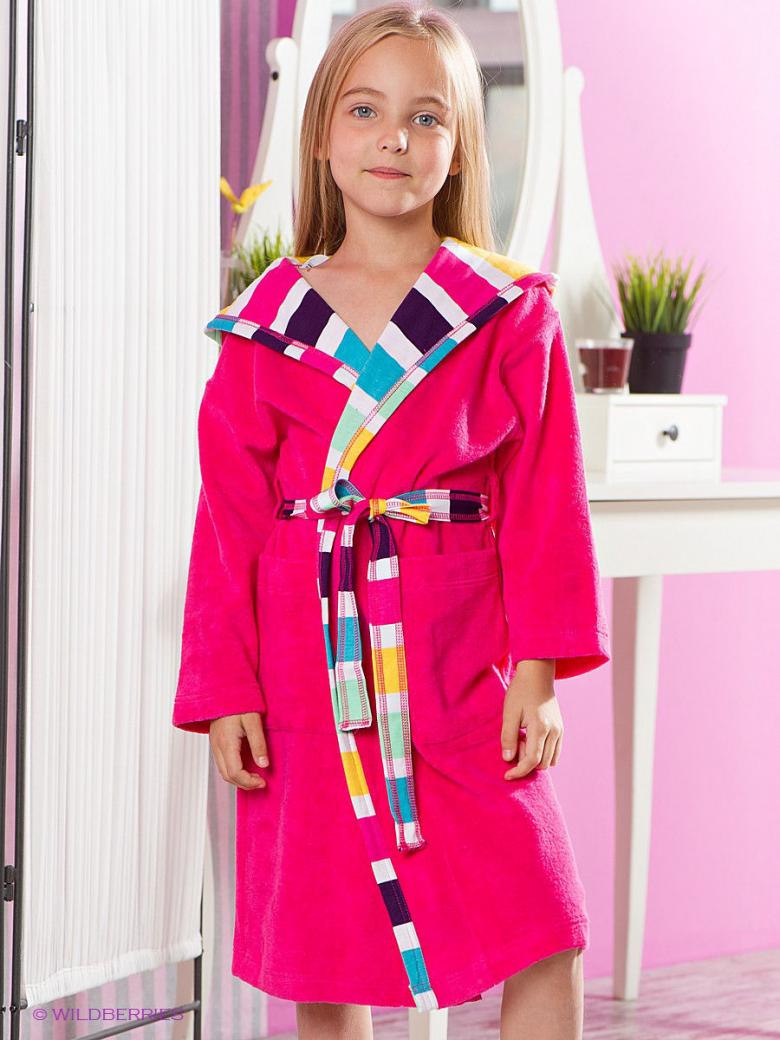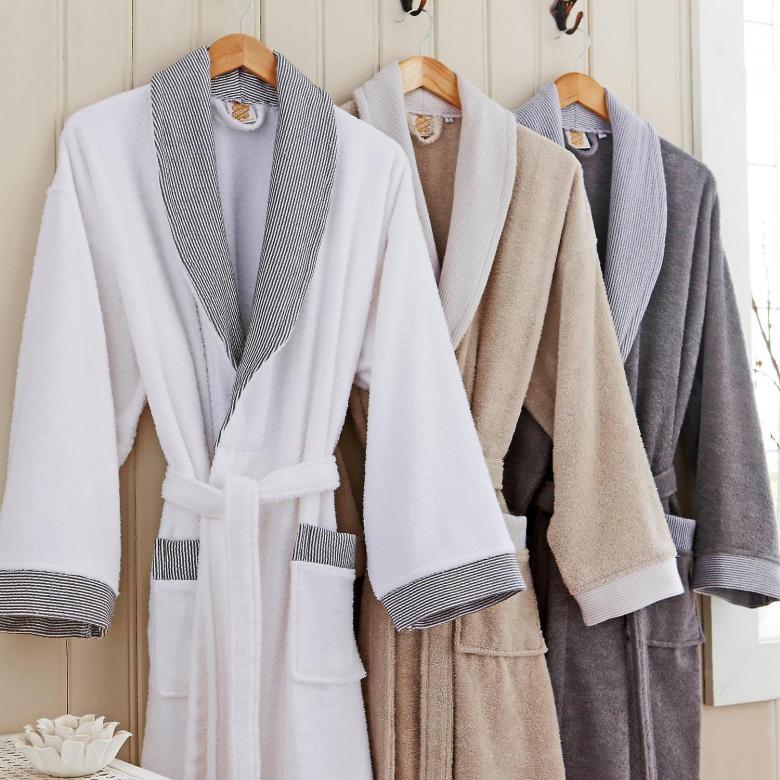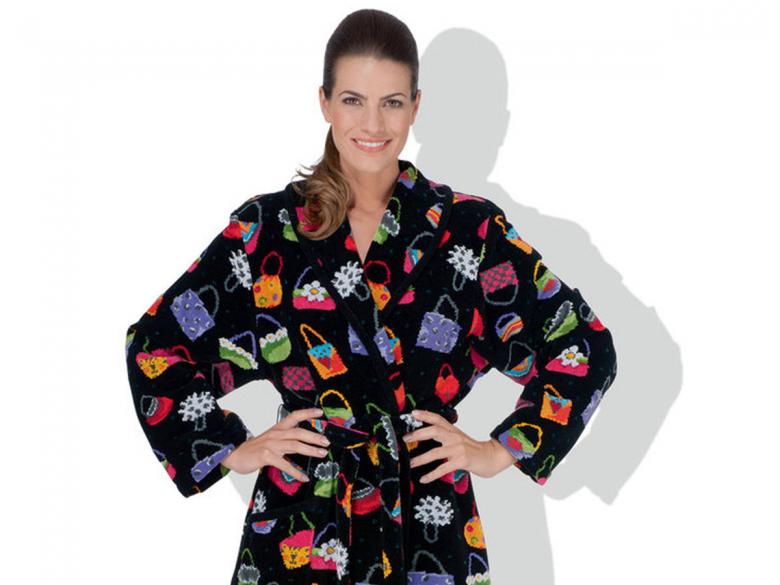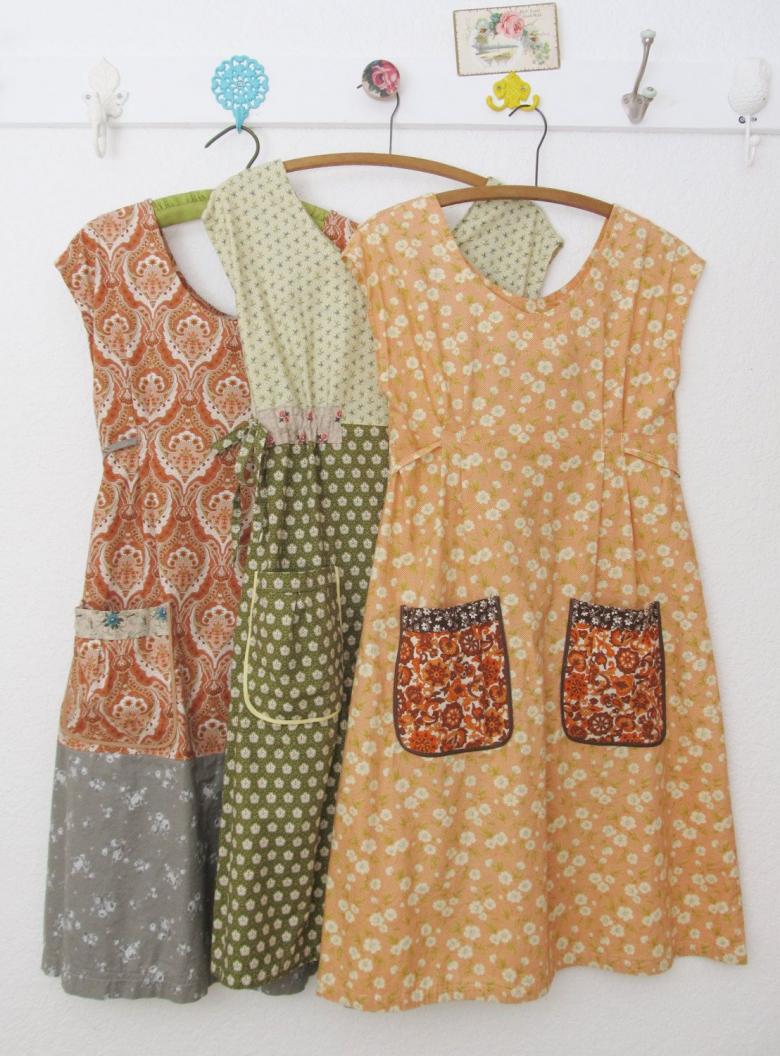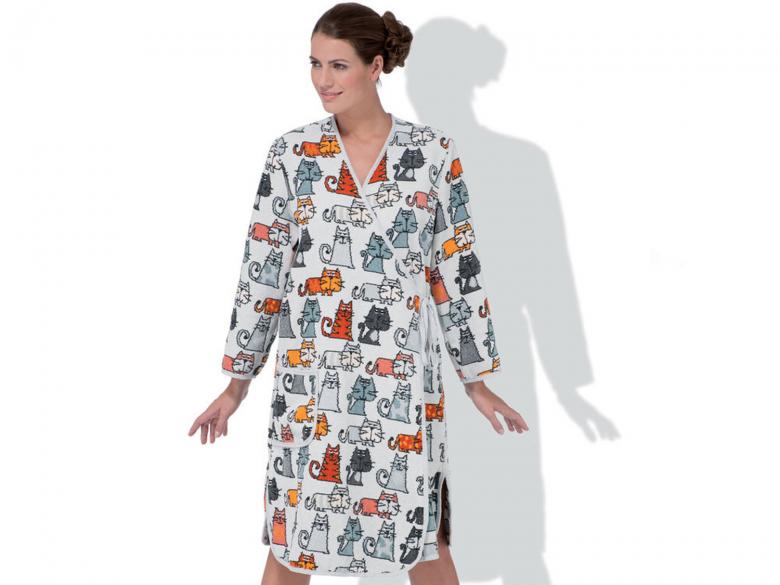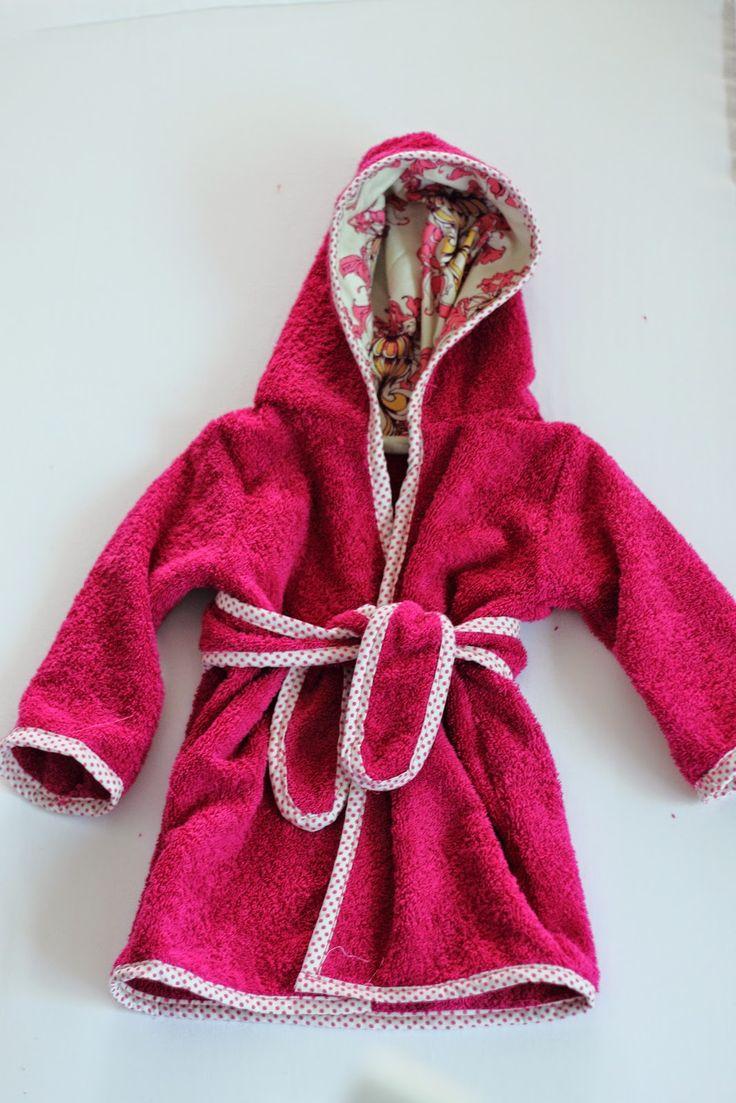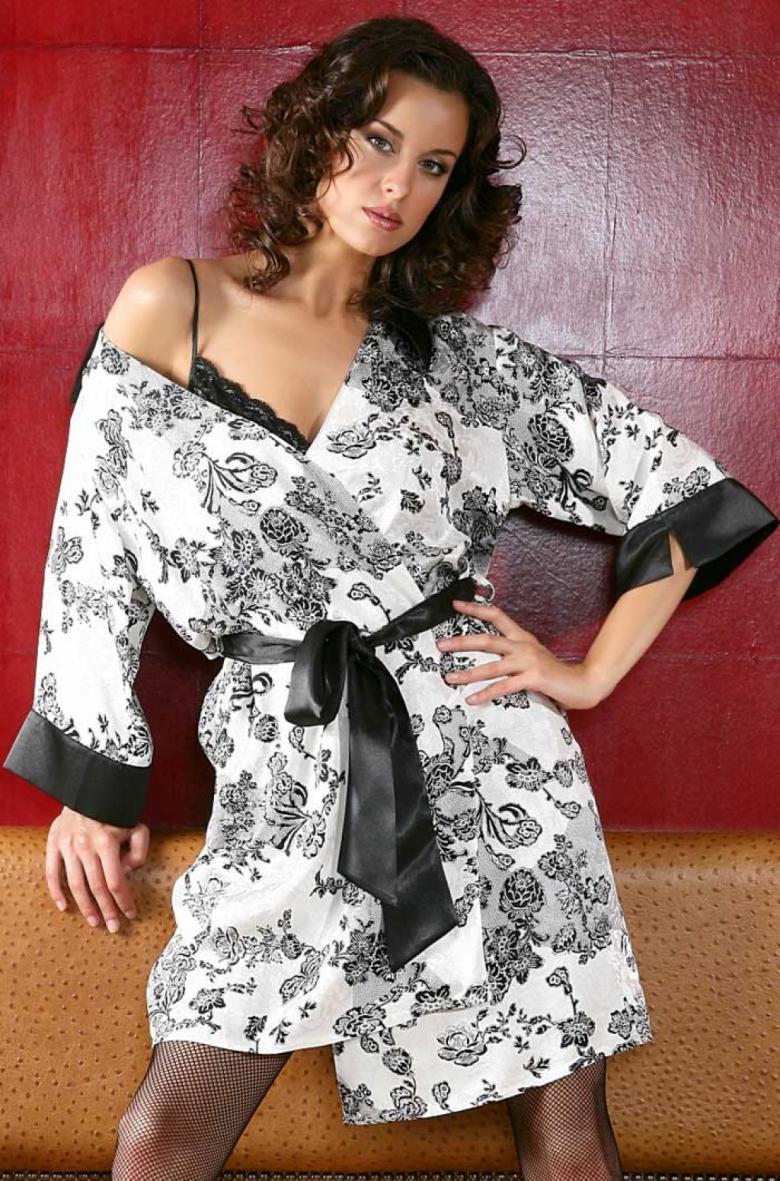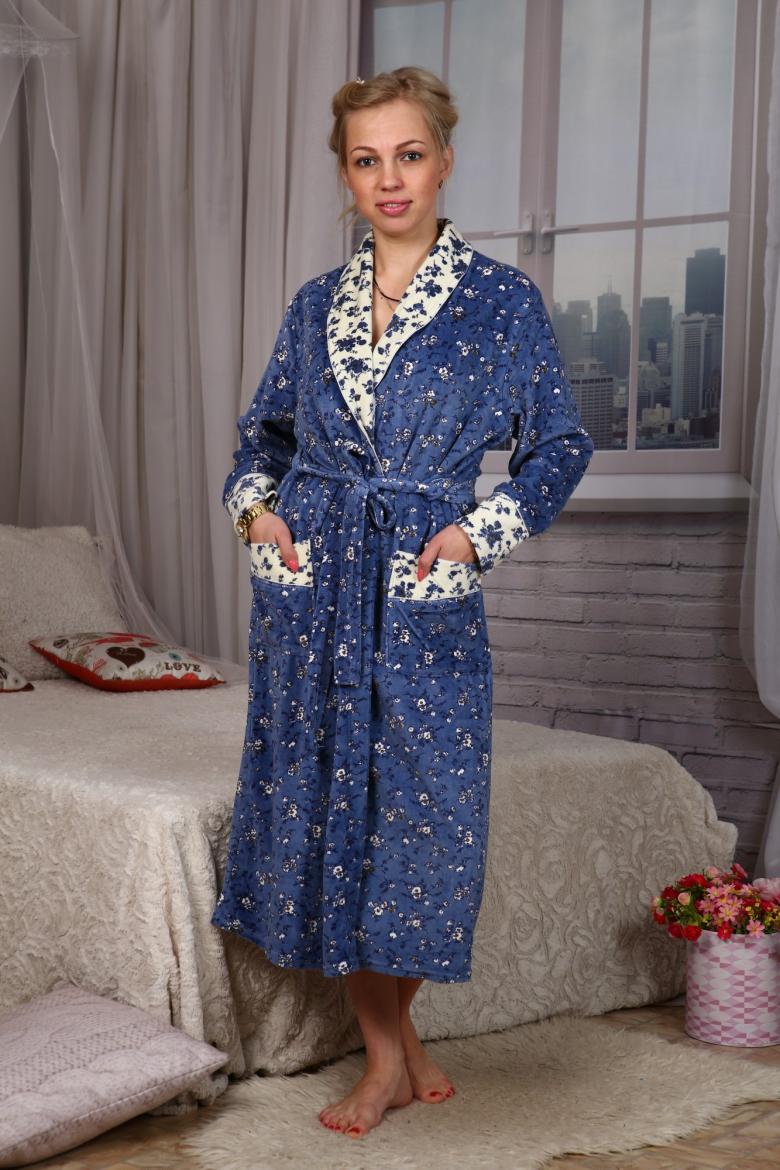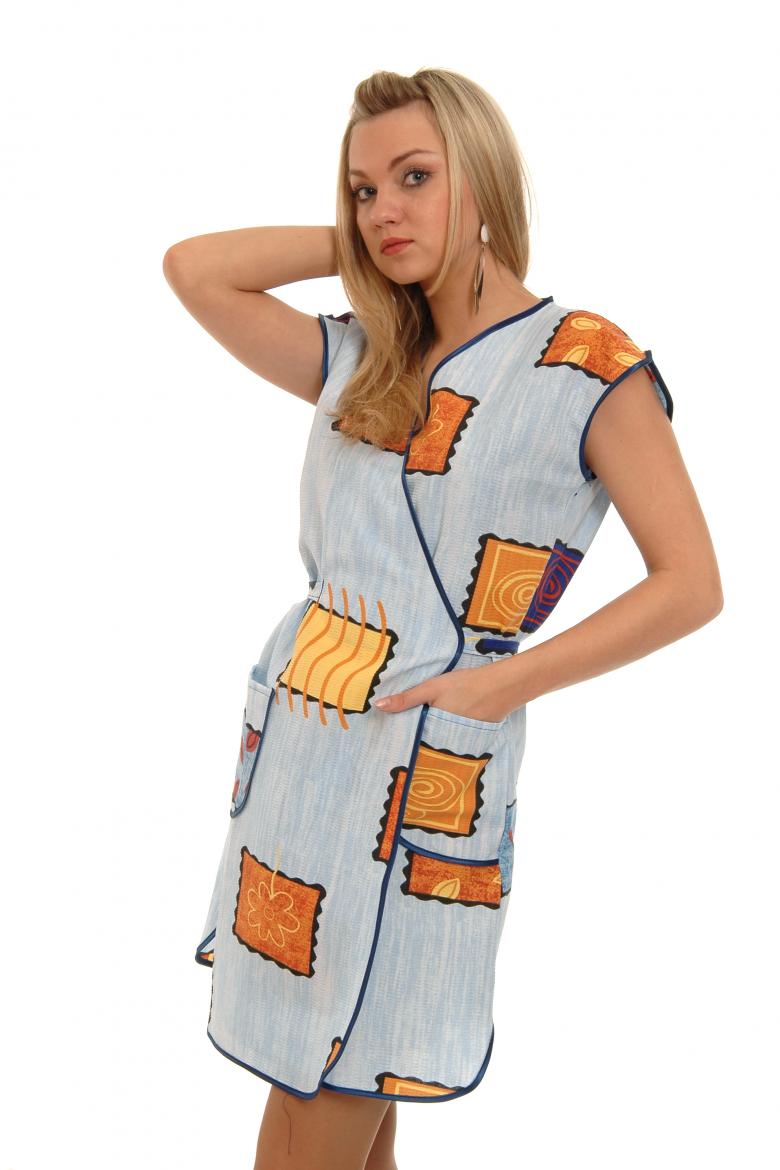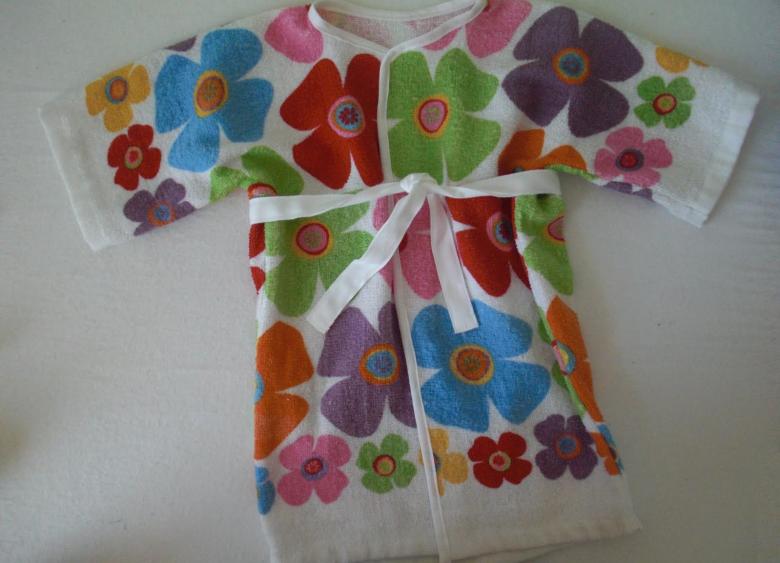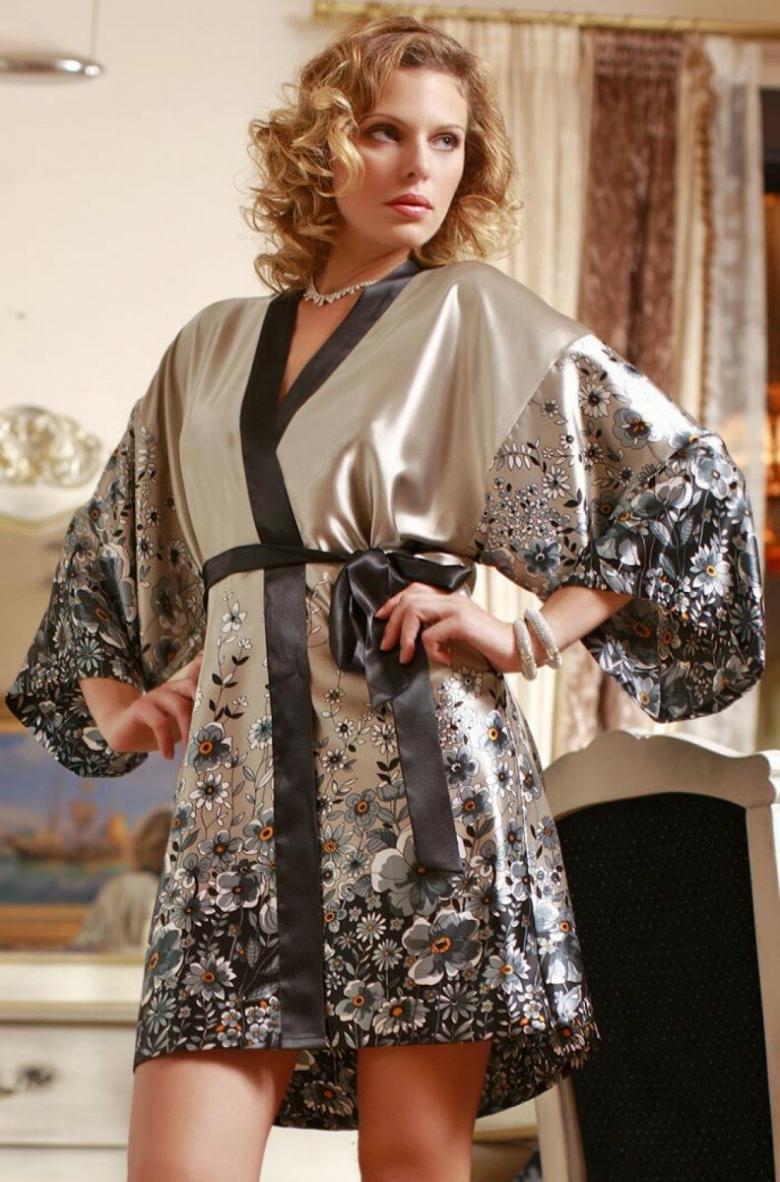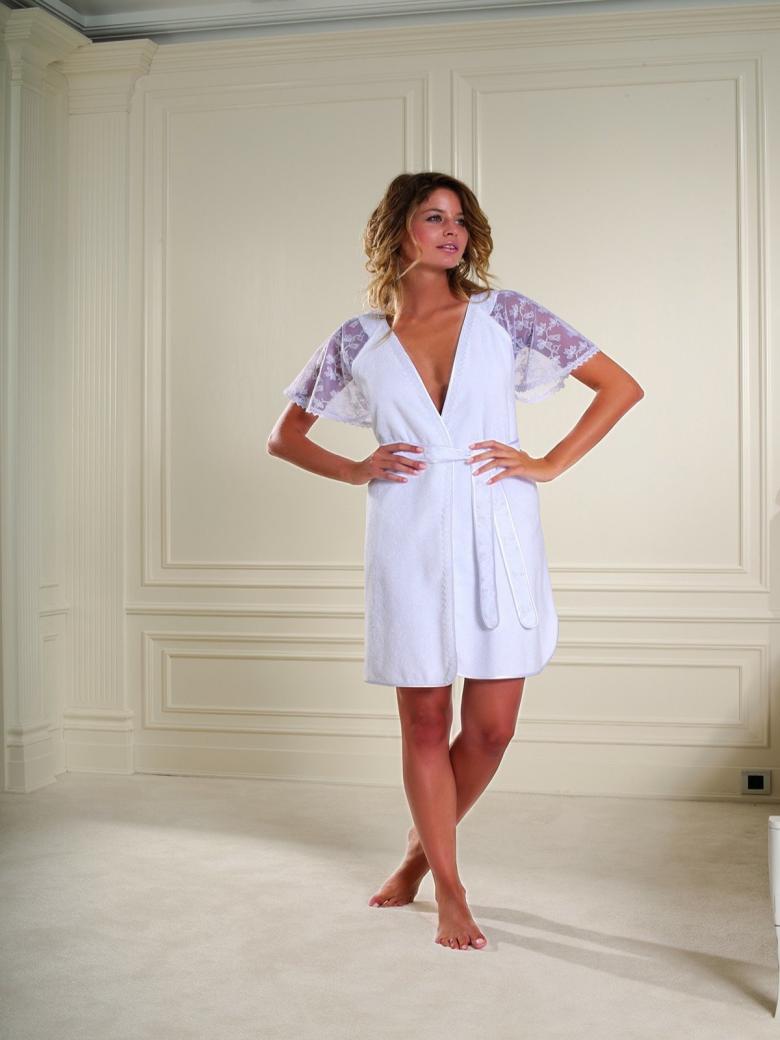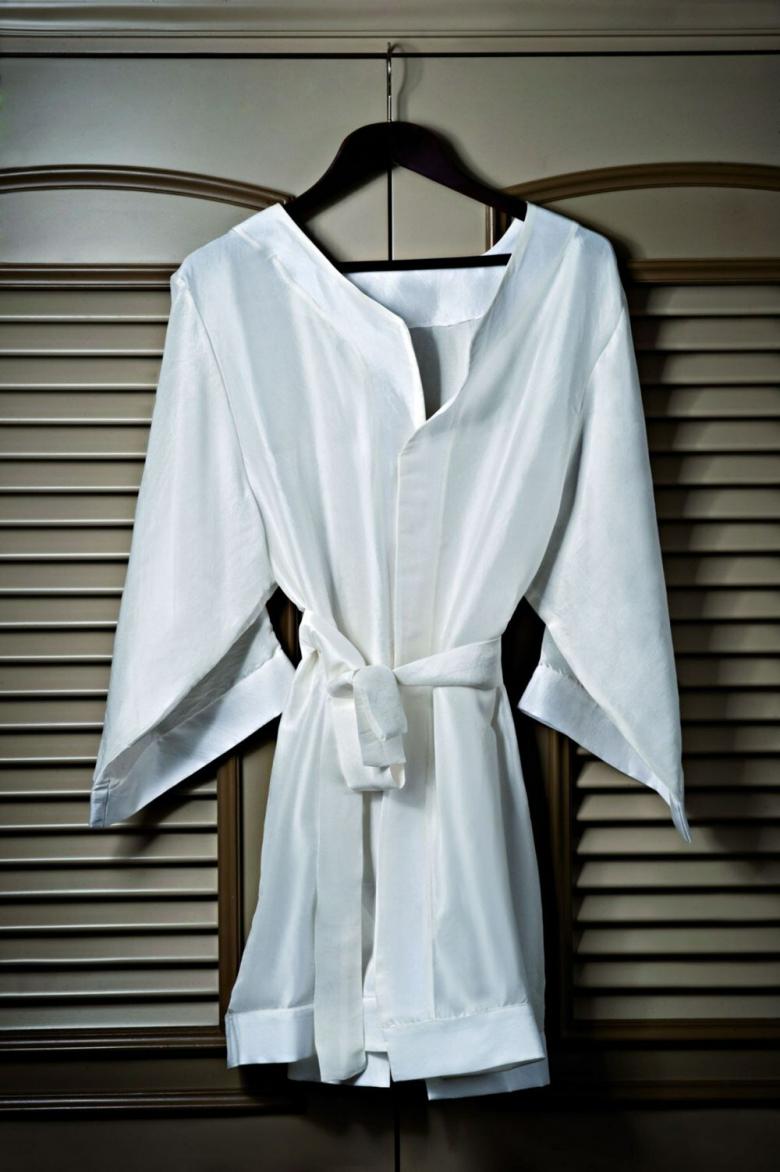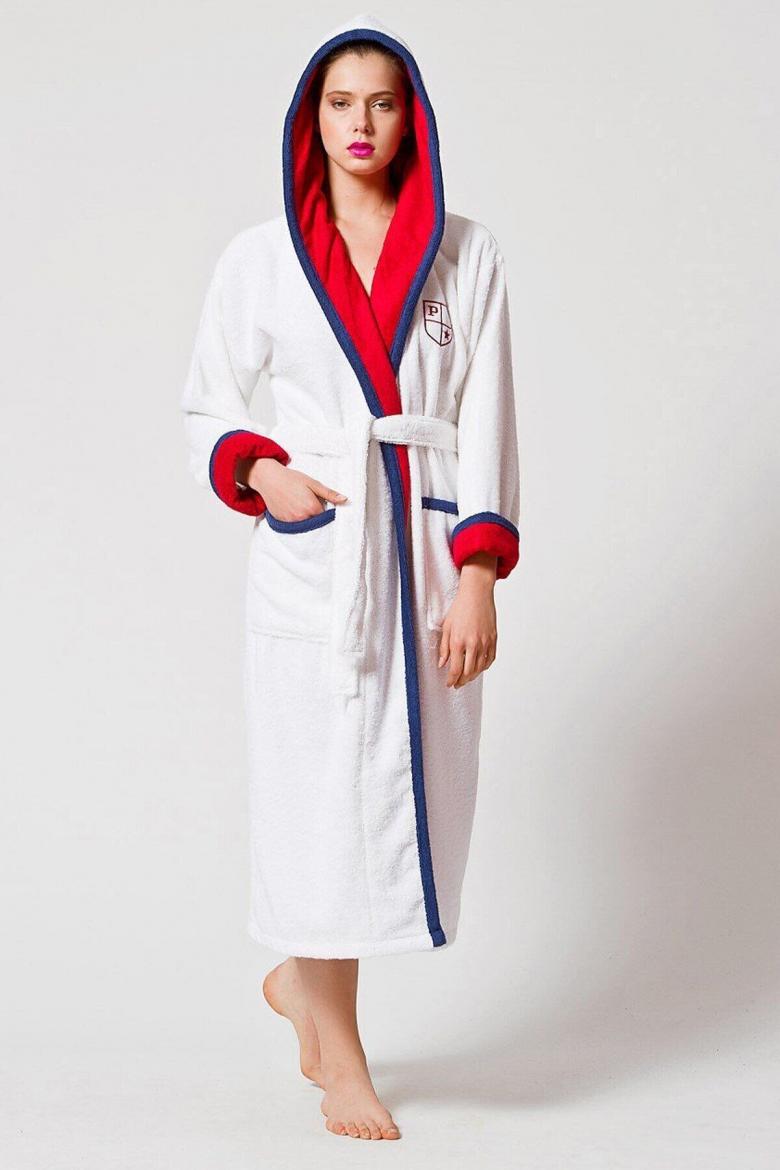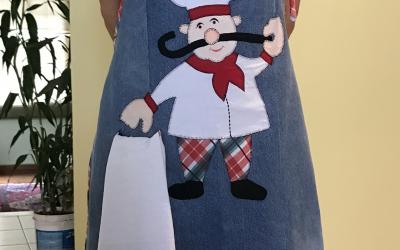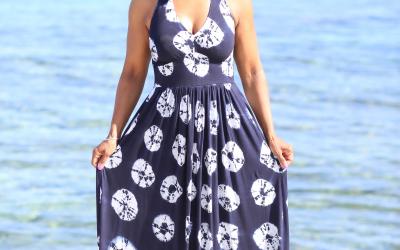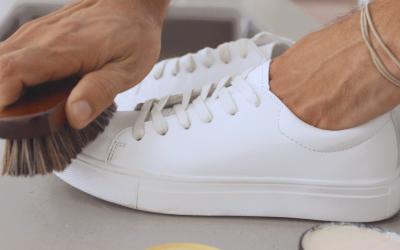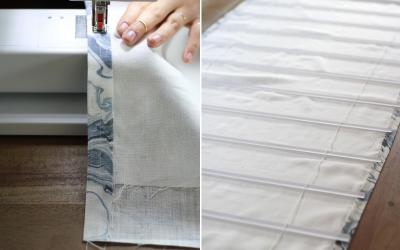How to sew a bathrobe with your own hands - a detailed description of sewing home robe
The robe is a comfortable and cozy home clothes, reflecting the style of the mistress.
For his sewing there are many styles and varieties (with a zipper, buttons, zipper, no seams), created on the basis of general principles of pattern construction and sewing technology.
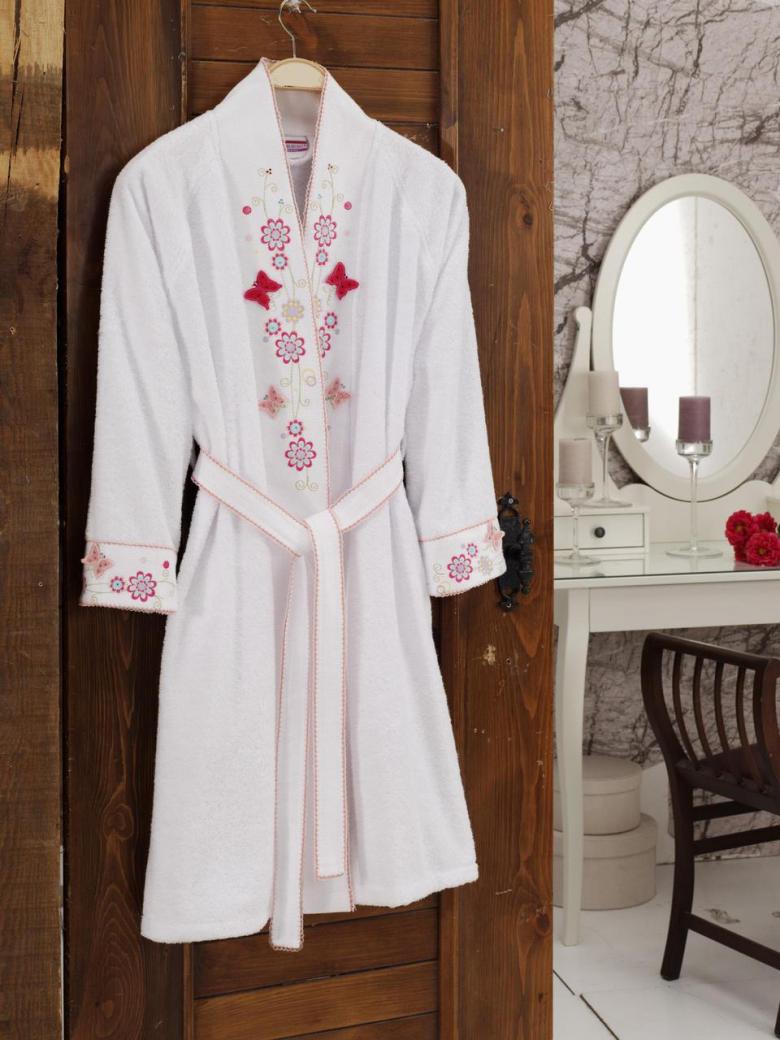
Sew a robe for your own hands in one day can even the hostess, who has no skills. It is enough to choose the right cut, fabric and necessary accessories. Fantasy and desire to be unique will help to sew home robe, emphasizing the attractiveness of the hostess.

Essential measurements
Before you begin cutting the fabric, you must take some basic measurements.
1. circumference:
- Chest-Chest,
- Waist-TO,
- Hips-HD,
- Neck-USH.

2. Length:
- product-DI,
- From shoulder to waist-DT,
- Sleeve-DR.
3. the width of the back-SS.

How to sew a bathrobe without a pattern
In this case, the product is modeled on the fabric. With a width of 150 cm cloth will need a length equal to the length of the robe plus 6-8 cm. Otherwise, you will need twice as much fabric.
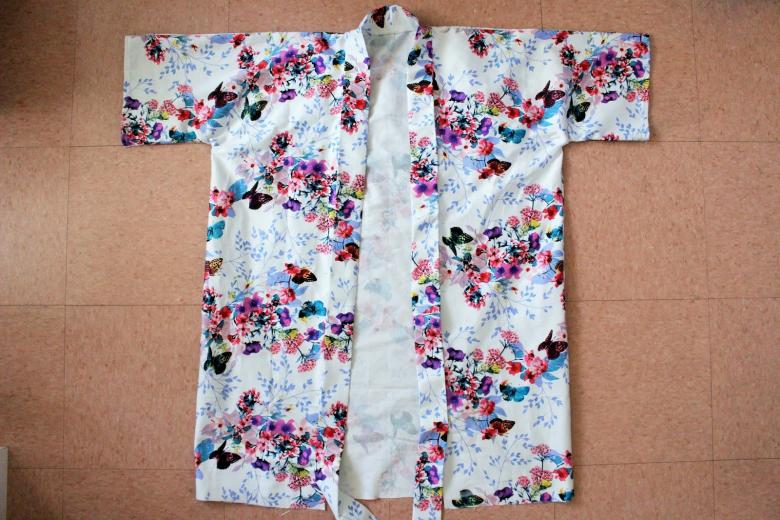
Order of cutting
A wide fabric is folded in half lengthwise, narrow - across with the wrong sides inside. One of the edges of the narrow fabric will be the middle of the back. Therefore, you need to subtract 1.5 cm on the seam and draw a line. When cutting on wide fabric back of the robe will be without a seam.
Calculation of the size of the details of the robe carried out by the removed measures.

The width of the robe
It is determined by the circumference of the hips (OB), dividing the value (OB) by 2 + 20 cm for the free fit and smell. For example, if OB=100 cm, the width should be 100/2 +20 = 70 cm.
To the right of the middle of the back take the width (70 cm) and draw a straight line to the front. A model of this width will sit well on any figure.

Length marking
It is good when the length of the fabric corresponds to the MDI. Otherwise, it has to be marked on the fabric. The product can be made shorter if desired.

Neckline marking
To build a neckline you need:
- On the narrow fabric from the edge of the back, subtract 1.5 cm for the seam and draw a straight line;
- On the straight line down Detach 3.5 cm (1.5 cm for the seam, 2 cm for the neckline);
- From left to right to postpone the width of the neckline-9 cm;
- Connect the points obtained by a smooth line, which will determine the shape of the neckline.

Marking the shelf.
Mark the shelf on the fabric as follows:
- On the right side from top to bottom put aside 1.5 cm for the allowance for shoulder seams;
- From this point, point down the length from the shoulder to the waist. This may be the maximum depth of the neckline. If desired, it can be reduced by subtracting the desired number of centimeters up from the point;
- From right to left from the top of the fabric from the straight line of the front (the smell), subtract 9 cm for the width of the neckline;
- Connect the obtained points by a straight line. In this case the neckline will be in the form of a triangle.

Draw the armhole.
Position the armhole must be strictly in the center of the fabric:
- From top to bottom, draw a vertical line of 25.5 cm, where on the seam-1.5 cm, on the armhole - 24 cm;
- In a straight line to cut the fabric. The neckline can be oval. Then the armhole will be wider. Shoulder will be a little down if the armhole line remains straight.
If the fabric is voluminous, then the depth of the armhole and the width of the sleeves should be increased.

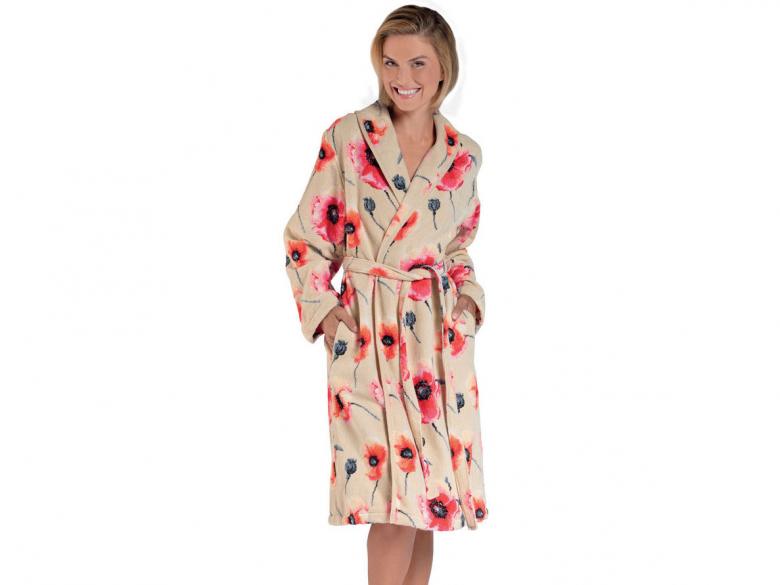
Sleeve design
A robe, sewn with your own hands, can be with or without sleeves. To build a pattern for the sleeve it is necessary:
- Measure the length of the arm from the shoulder to the desired length. This can be just below the shoulder, to the elbow, 3/4 or to the wrist;
- cut a square of standard size (48 cm) or with sides of specified length;
- Make an allowance for hemming 1.5 cm.
In a straight armhole sew rectangular sleeves.
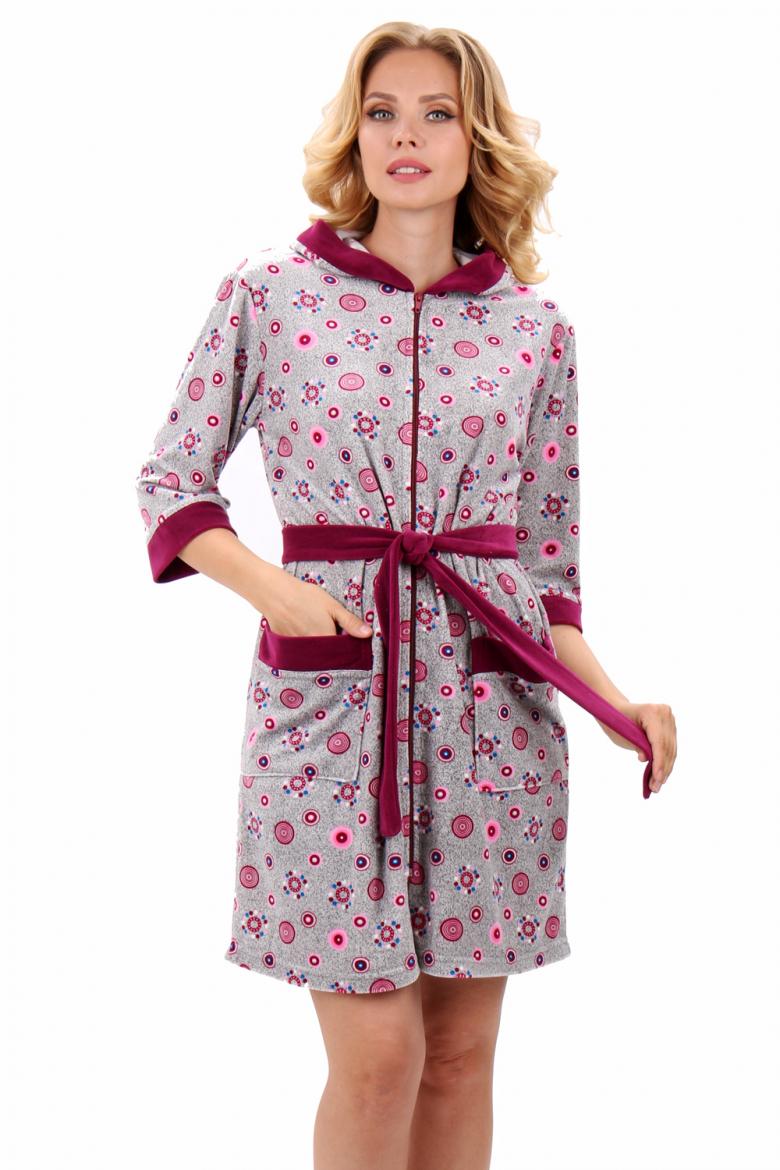
Assembling the parts
After cutting the robe, its parts must be assembled and tried on. If necessary, adjust details and then sew on a sewing machine.
All seams must be treated with a zigzag or overlock. If the fabric is thin, you can twist the edges of seams and stitch with a straight stitch.

Seam edges of winter coats of thick not loose fabrics is good to handle with zigzag scissors.
Such a robe will be beautiful and neat not only on the front side, but also on the wrong side.
Do not forget to sew the two halves of the belt, make and process a hole for it on the right side at the waist line.

Models of robes for beginners
The role of home robes is multifaceted. It is not only an everyday garment. There are styles in which to welcome unexpected guests, and hostesses look spectacular.

Below are a few models of robes that can be sewn by hand by a novice needlewoman.

Kimono robe
This is a simple model with one-piece sleeves. For sewing we need a 150 cm wide cotton fabric, and the length of the cut should be equal to the length of the robe, multiplied by 2 plus 6-8 cm for the hem. For example, the length of the robe will be 100 cm. Then the length of the fabric should be 100 x 2+6 cm=206 cm.
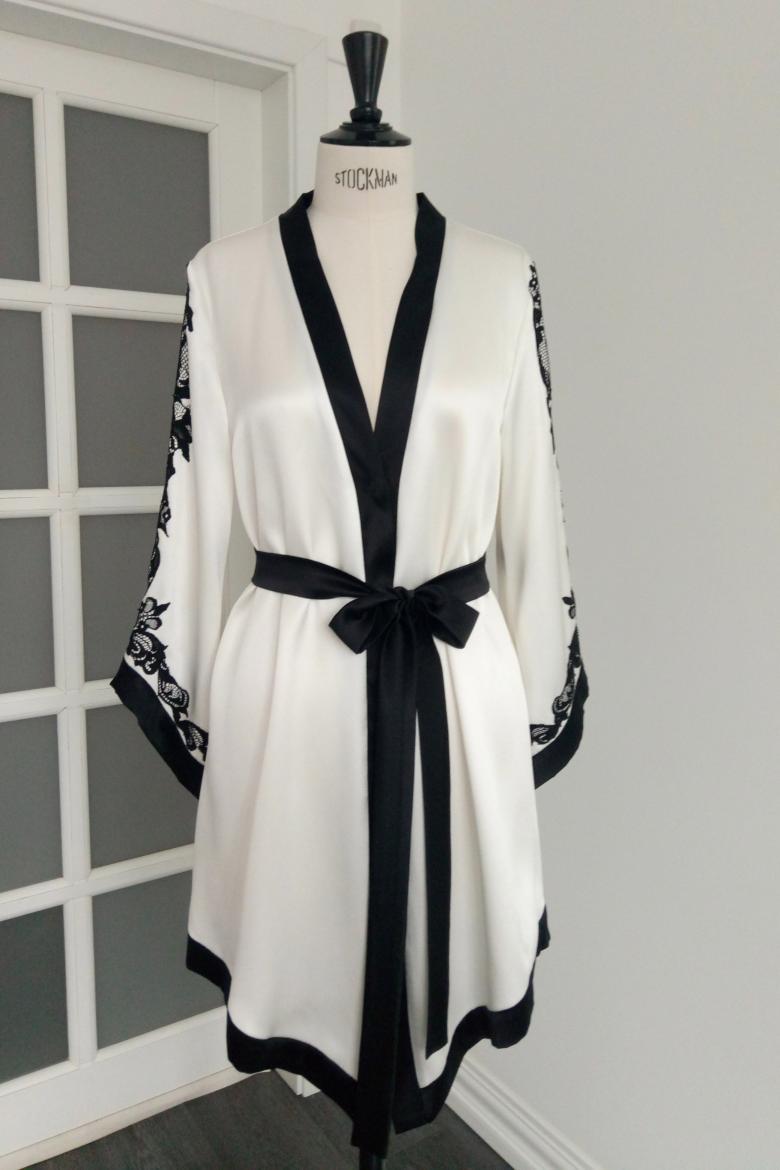
Cut rules
Fabric on the length of the product (MDI) to fold in half with the wrong side inside. You get a rectangle of 150 by 103 cm. For correct marking and cutting, in the middle of the fabric must draw a straight line.

Apply details to the fabric in the following sequence:
- For the neckline to apply from the drawn line on 9 cm on both sides. For the front, the depth of the neckline can be arbitrary. The maximum depth is equal to the length from shoulder to waist (DT);
- On both sides of the fabric from top to bottom set aside 20-30 cm for the armhole;
- to draw the sleeve line, you should consider the width of the robe. If its width of 100 cm, then the remaining 50 cm divided by 2 and we get the sleeve length of 25 cm (150 cm width of the fabric minus 100 cm width of the robe = 50 cm/2 = 25 cm);
- from the height of the armhole in the direction of the center of the fabric on both sides of the calculated sleeve length (25 cm);
- At the bottom of the fabric from the central line, half the width of the jacket. In this example, 50 cm on both sides (100/2=50 cm);
- Connect the resulting points with straight lines. If desired, the length of the sleeve can be increased by the remaining parts of the fabric.
When cutting you must not forget about the seam allowance of 1.5-2 cm.

Before sewing the side seams, the robe must be pressed and tried on, and if necessary - corrected. Then you can begin sewing on the machine. All seams must be trimmed. The sleeves and bottom of the robe tucked and stitched with a closed cut. You can also trim the neck and front shelves, or make a trim strip. At the end of the work remains to sew the belt and you can show your work to the family.

The robe without stitches
This robe model can be quickly sewn without a pattern by any novice needlewoman.
To do this it is necessary to cut it directly on the fabric, then trim the edges with a closed seam or seam, sew the welt, sew the belt and the robe is ready. Model without seams can be used as an apron.

Rules of cutting
Choose a fabric. The length of the narrow fabric should be equal to twice the length of the robe, plus 2-3 cm for the hem. Fabric in width to fold in half, joining the edges, and in the middle of the dina of the fabric to draw a line (the middle of the front and back), from which you must conduct the marking of the neck and waist. To do this, perform:
- From the middle of the back and the front (shoulder line) to the side of the selvedge, set aside 7 cm for the neckline;
- On the front of 18-20 cm down, and on the back of 2 cm. Connect these points with a straight line in the front and a smooth line in the back;
- Measure the length from shoulder to waist and draw lines for the sleeves on both parts of the product. Repeat the line after 2 cm;
- Make cuts along the shoulder line from the edges to the neck to allow free movement of the arms. The length of the cuts is arbitrary.

Lightweight robe, sewn with his own hands, will be a comfortable outfit before going to bed or during the morning make-up. Properly chosen style will adorn the figure of the mistress.

Experts recommend choosing a loose fit for a home robe, so that it will be comfortable. Housewear should not constrain the movement.


